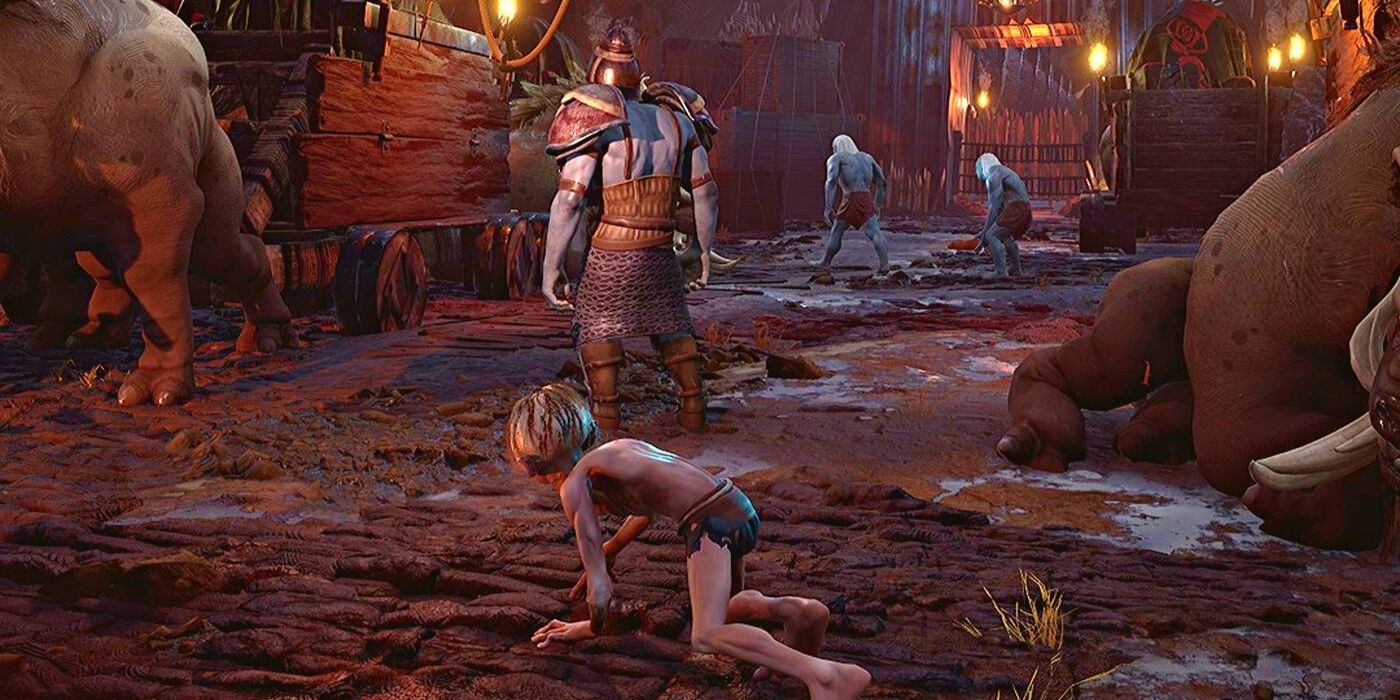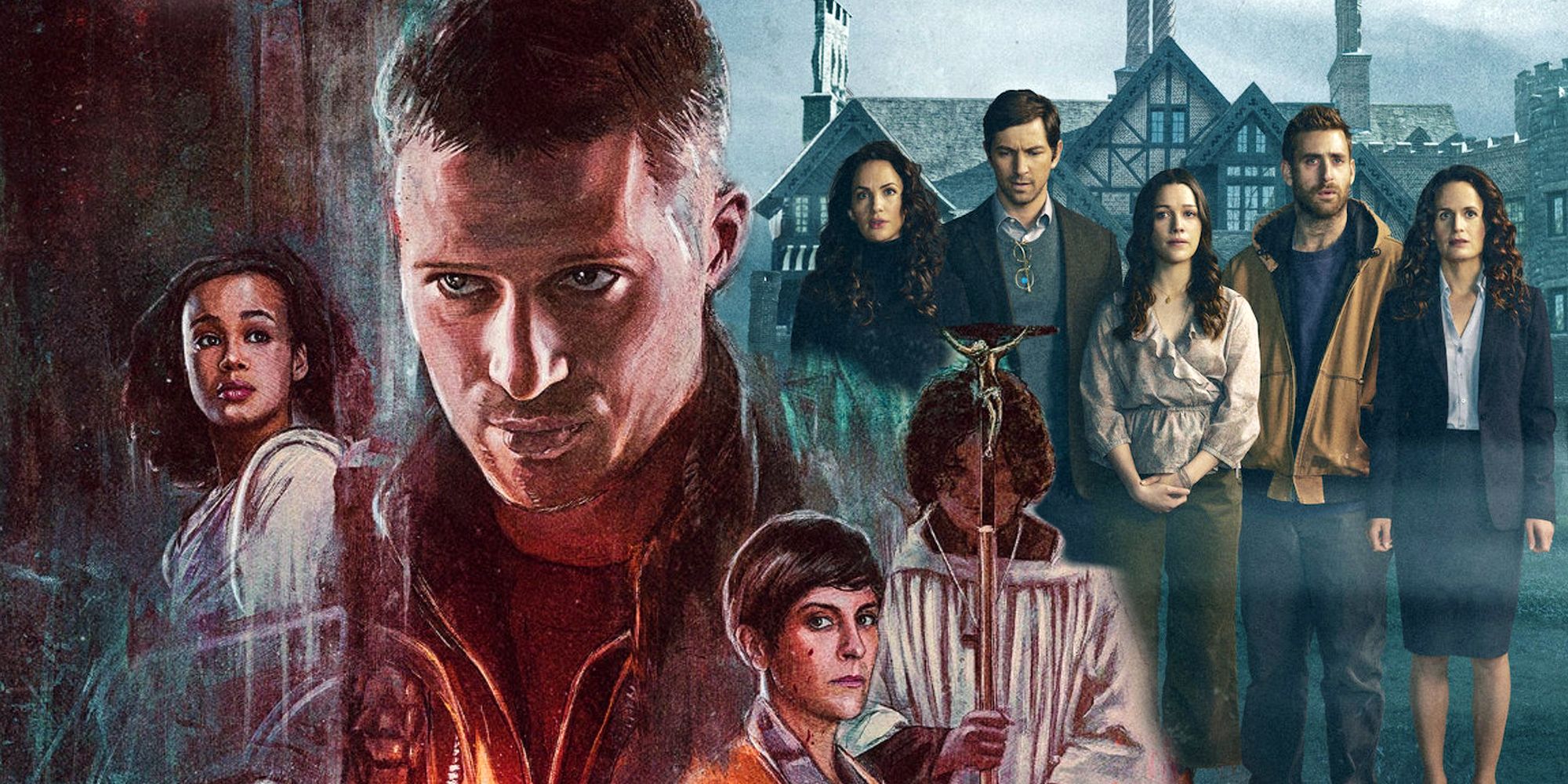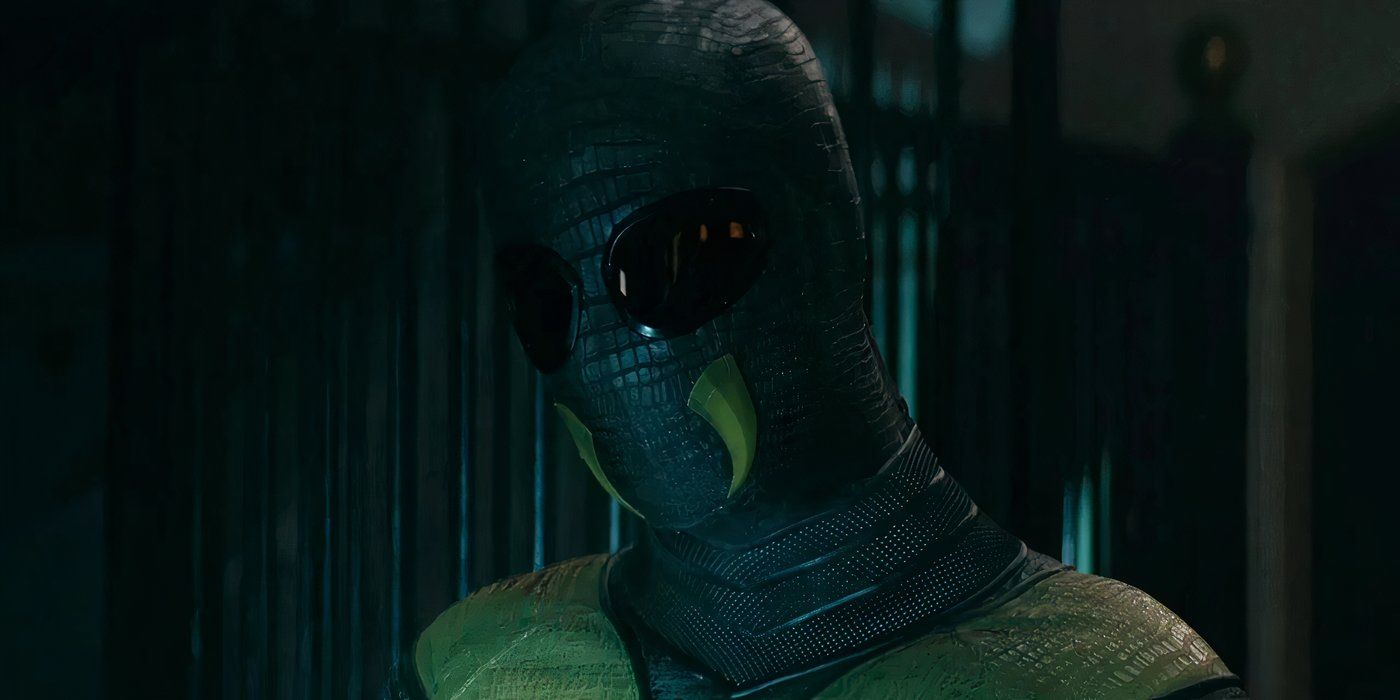Quick Links
- Why The Lord of the Rings: Gollum Is (Still) Mostly Unplayable
- The Lord of the Rings: Gollum Gameplay & Story Review
The Lord of the Rings: Gollum from Daedalic Entertainment sees the titular character roaming Middle-earth shortly before the main events in The Fellowship of the Ring. Initially told through flashbacks as Gandalf questions Gollum about the One Ring, the game explores story beats only briefly referenced in the book and appendices (and Peter Jackson’s films), offering a fairly unique take on The Lord of the Rings’ canon. Unfortunately, the game is rife with technical issues (even after multiple patches) and fails to deliver any kind of worthwhile experience.
The Lord of the Rings: Gollum is the worst game of 2023 so far, and the reason for this is that it just doesn’t work – in every sense of the phrase. The game crashes too often to really progress through its story, and the parts that can be played are unpolished and buggy. The premise, which sounded odd but intriguing, sadly doesn’t work either – Gollum is too unlikeable and annoying as a protagonist. The stealth mechanics and platforming are fine, but they do feel a bit outdated and get repetitive quickly.
Why The Lord of the Rings: Gollum Is (Still) Mostly Unplayable

As first reported during our review-in-progress, The Lord of the Rings: Gollum was bogged down by technical issues on PS5 during our time with it. Despite at least two patches now, there hasn’t been a version update to wholly fix these problems, even though the game runs somewhat smoother than it did pre-launch. For reference, the game crashed on PS5 at least once every minute pre-launch, rendering it unplayable. Now, the game typically runs for 5–10 minutes before it crashes. This makes The Lord of the Rings: Gollum still mostly unplayable and a true exercise in frustration. It’s mind-boggling that any game was released in this state, but it means any positive aspects regarding Gollum come with a huge qualifier – they’re only positive if the game goes long enough without crashing to see it.
The Lord of the Rings: Gollum Gameplay & Story Review
Told in ten chapters, The Lord of the Rings: Gollum takes players through iconic locations like Barad-dûr and Mirkwood. There are also enough well-known characters (like Gandalf) to balance out the new ones (like Mell, a blind elf Gollum encounters later on). The stealth mechanics and puzzles make this essentially Uncharted but Lord of the Rings, but whereas Nathan Drake has the ability to shoot and ask questions later, Gollum will instantly die (and often) if an orc or other enemy captures him. Because of this, being able to sneak and slink is important – and finding the best routes through trial and error becomes a cornerstone of the game.
Technical issues aside, the early portions of The Lord of the Rings: Gollum are fairly enjoyable. There’s a lot of climbing – which quickly becomes too much climbing after the first two chapters – as Gollum navigates the areas in and around Mordor, but the obstacles can make for some fun platforming. Constantly climbing and swinging gets too repetitive, but initially, it offers the kind of verticality that put games like Assassin’s Creed on the map. The other key mechanic – stealth – can take some getting used to as Gollum is not strong and lacks any real defense. If he’s spotted, he will almost certainly die. A great amount of strategy is required in order to throw rocks as distractions, extinguish lamps to slink in the darkness, and find the right routes to get past legions of orcs.
At times, players actually have the chance to take sides – choosing to go with Sméagol’s option or Gollum’s. Generally, Sméagol’s choice is nicer while Gollum’s tends to be mischievous or downright murderous. Still, it’s through this mechanic that players can see the dichotomy of Sméagol/Gollum in a way that feels true to Tolkien’s original vision of the character. Unfortunately, this isn’t enough to make Gollum a compelling protagonist.
Andy Serkis’ performance in The Lord of the Rings movies has become synonymous with Gollum (and a major part of pop culture for the last 20-plus years), and there are certainly times when Daedalic’s version of the character doesn’t sound or look right because of Serkis’ role. It mostly comes off as an impression of Serkis’ performance, rather than a new approach to Gollum. As a protagonist, Gollum is simply too annoying and too difficult to commiserate with, although a few early cutscenes do attempt to add more depth to the character and make him more relatable.
The Lord of the Rings: Gollum is also a surprisingly dark game, especially during the Mordor sections, where Gollum is one of many slaves living and dying in the mines of Barad-dûr – a fiery hellscape where one of the first missions is finding tags off of dead slaves’ bodies. This doesn’t quite gel with the character designs in Gollum, which are somewhat cartoonish and can sometimes have an uncanny valley effect. The result is a contradictory and ugly art style that doesn’t work for the story being told here. The game is also literally dark – even with the brightness turned up, it’s often hard to distinguish what’s climbable and where a path lies because of how monochromatic and washed out some of the locations are.
Admittedly, The Lord of the Rings: Gollum seems to be fighting an uphill battle. The premise may have worked if the game weren’t so odd-looking or if it didn’t crash so often, but these are some big ifs. At some point, something went very wrong with The Lord of the Rings: Gollum – hopefully the next LOTR game will be better.
Screen Rant was provided with a code for The Lord of the Rings: Gollum on PS4/PS5 for the purpose of this review.





